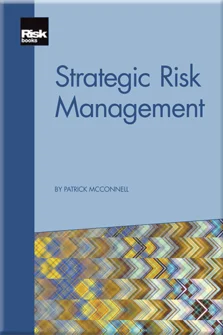Strategic Governance Risk
Strategic Governance Risk
Introduction
What is Strategy?
What is Strategic Risk?
Strategic Governance Risk
Different Strategies, Different Risks
Strategic Risk Assessment
Organic Growth Strategies
Acquisition Strategies
Productivity Strategies
Innovation Strategies
Restructuring Strategies
Evolution of Strategic Risks – A Case Study
Summary of Strategic Risks from Case Studies
Strategic Risk-Management Framework
Managing Strategic Positioning Risks
Managing Strategic Execution Risks
Summary
This chapter provides a discussion of the important issue of Governance Risk and the various responsibilities for developing, approving and monitoring strategic risk. After discussing the various responsibilities for strategy development, the chapter lists the major activities in strategy development and finally identifies some of the major strategic governance risks that arise. To put strategic risk in context, the chapter makes extensive use of arguments for managing such risks made by banking regulators.
DIFFERENT FORMS OF CORPORATE GOVERNANCE
Before discussing the governance of strategic risk specifically, it is worth noting that there are various structures of corporate governance around the world. It is not the purpose of this book to advocate changes in corporate-governance structures but to note that some structures create more strategic risks than others. In particular, the various responsibilities of, and conflicts between, boards and senior management, particularly the chief executive officer (CEO), are important in this context.
There are two main types of board structure in large financial institutions (OECD 2015):
-
- unitary board: a single-tier
Copyright Infopro Digital Limited. All rights reserved.
As outlined in our terms and conditions, https://www.infopro-digital.com/terms-and-conditions/subscriptions/ (point 2.4), printing is limited to a single copy.
If you would like to purchase additional rights please email info@risk.net
Copyright Infopro Digital Limited. All rights reserved.
You may share this content using our article tools. As outlined in our terms and conditions, https://www.infopro-digital.com/terms-and-conditions/subscriptions/ (clause 2.4), an Authorised User may only make one copy of the materials for their own personal use. You must also comply with the restrictions in clause 2.5.
If you would like to purchase additional rights please email info@risk.net











